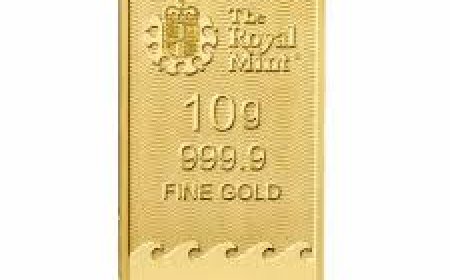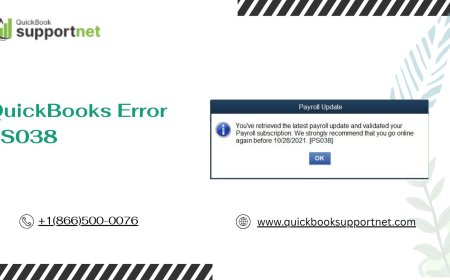How To Spring Clean Beach-Style Jacksonville
How to Spring Clean Beach-Style Jacksonville Spring in Jacksonville, Florida, brings more than just warmer temperatures and blooming palmettos—it brings a renewed energy to coastal living. As the humidity rises and the tourist season approaches, residents and property owners across Jacksonville’s beach communities—from Neptune Beach and Atlantic Beach to Jacksonville Beach and Ponte Vedra Beach—fa
How to Spring Clean Beach-Style Jacksonville
Spring in Jacksonville, Florida, brings more than just warmer temperatures and blooming palmettos—it brings a renewed energy to coastal living. As the humidity rises and the tourist season approaches, residents and property owners across Jacksonville’s beach communities—from Neptune Beach and Atlantic Beach to Jacksonville Beach and Ponte Vedra Beach—face a unique challenge: how to thoroughly spring clean in a beach-style environment. Unlike traditional urban or suburban homes, beach-style properties are exposed to salt air, sand infiltration, mold-prone humidity, and constant wind-blown debris. A standard spring cleaning routine simply won’t cut it. This guide provides a comprehensive, step-by-step roadmap tailored specifically to the coastal realities of Jacksonville, helping you protect your investment, enhance indoor air quality, and restore the serene, breezy aesthetic that defines beach-style living.
Spring cleaning in this context isn’t just about tidying up—it’s about preventative maintenance, environmental adaptation, and long-term preservation. Whether you own a beachfront cottage, a second-floor condo with ocean views, or a coastal-inspired home nestled just a few blocks from the dunes, understanding how salt, sand, and sun impact your space is critical. This guide will walk you through every phase of a true beach-style spring clean, from exterior deep-cleans to interior de-salting rituals, and equip you with the best tools, local resources, and real-world examples to make your home not just clean, but truly coastal-ready.
Step-by-Step Guide
1. Assess Your Property’s Beach Exposure Level
Before you begin scrubbing or sweeping, take a moment to evaluate how directly your property interacts with the beach environment. Properties within 500 feet of the shoreline, especially those with direct ocean views or wind-facing orientations, experience significantly higher levels of salt spray and sand accumulation than homes located even a block inland. Use this assessment to prioritize your cleaning efforts.
Check for:
- White, crusty residue on windowsills, railings, and metal fixtures
- Sand accumulation in corners, under doors, and along baseboards
- Fading or chalky paint on exterior surfaces
- Mildew or black spots on grout, shower curtains, or vinyl siding
If you notice salt residue or sand buildup in multiple areas, you’re in the high-exposure zone. If only minor signs are present, you’re in the moderate zone. Low-exposure homes still require attention but can focus more on general maintenance.
2. Exterior Deep Clean: Windows, Decks, and Railings
Beach-style homes suffer from relentless salt deposition. Salt is hygroscopic—it attracts moisture—and when combined with Jacksonville’s humid climate, it accelerates corrosion and paint degradation. Begin your spring clean by tackling the exterior surfaces most vulnerable to salt damage.
Windows and Screens: Remove window screens and wash them with a solution of warm water and 1/4 cup white vinegar per gallon. Scrub gently with a soft-bristle brush to dislodge salt crystals and insect residue. Rinse thoroughly and let dry in the sun. For windows, use a microfiber cloth and a 50/50 mix of distilled water and vinegar. Avoid ammonia-based cleaners—they can damage coastal window seals. Dry with a squeegee to prevent water spots.
Decks and Porches: Wooden decks are especially prone to salt retention and mold. Use a pressure washer set to 1,200–1,500 PSI with a wide fan tip to avoid wood damage. Apply a marine-grade deck cleaner (look for oxygen bleach, not chlorine bleach) and let it sit for 15 minutes. Scrub with a stiff nylon brush, then rinse. Allow the deck to dry for 48 hours before applying a water-repellent sealant with UV protection. For composite decks, use a non-abrasive cleaner and avoid pressure washing entirely—stick to a soft brush and mild detergent.
Railings and Metal Fixtures: Salt corrodes aluminum, stainless steel, and wrought iron. Wipe down all railings, light fixtures, and hardware with a solution of 1 tablespoon baking soda and 1 quart warm water. For stubborn corrosion, use a commercial salt remover like Star brite Ultimate Salt Off. Buff with a microfiber cloth to restore shine and prevent pitting. Apply a thin coat of automotive wax to metal surfaces to create a protective barrier against future salt exposure.
3. Sand Removal: From Floors to Furniture
Sand is the silent invader. It clings to towels, gets tracked inside on bare feet, and grinds into flooring like abrasive grit. In Jacksonville, even homes 200 yards from the beach accumulate sand through open windows, pet paws, and wind currents.
Hard Floors: Sweep with a soft-bristle broom first—never use a stiff brush, which can scratch wood or tile. Follow with a vacuum equipped with a HEPA filter and a brushless attachment. For tile or stone floors, mop with warm water and a few drops of dish soap. Avoid vinegar on natural stone—it can etch the surface. Dry immediately with a clean towel to prevent water spots.
Carpet and Rugs: Shake outdoor rugs vigorously outside. For indoor rugs, use a vacuum with a rotating brush head. Sprinkle baking soda over carpets, let sit for 20 minutes, then vacuum. This absorbs odors and lifts fine sand particles. For deep cleaning, rent a steam cleaner and use a low-moisture setting. Always dry carpets completely to prevent mold.
Furniture and Outdoor Cushions: Remove all cushions and shake them outdoors. Vacuum the fabric using an upholstery attachment. For mildew, mix 1 cup white vinegar, 1/4 cup baking soda, and 1 quart water. Spray lightly, scrub with a soft brush, rinse with clean water, and air dry in direct sunlight. Never store damp cushions—always allow them to dry fully before putting them away.
4. Interior Air Quality and Humidity Control
Coastal homes are breeding grounds for mold and mildew due to high humidity levels. Jacksonville’s spring humidity often exceeds 80%, making indoor air quality a top concern.
Check for Mold: Inspect bathrooms, laundry rooms, under sinks, and behind shower curtains. Look for black or green spots, musty odors, or peeling paint. Use a mold test kit (available at hardware stores) to confirm presence. For small areas, clean with a solution of 1 part hydrogen peroxide to 2 parts water. Apply with a spray bottle, let sit for 10 minutes, then wipe. Never use bleach on porous surfaces—it only kills surface mold and can worsen the problem.
Dehumidify Strategically: Install a whole-house dehumidifier if you don’t have one. If not, use portable units in bathrooms and basements. Set the humidity level to 45–50%. Run dehumidifiers daily during spring and summer. Empty reservoirs regularly. Consider using moisture-absorbing products like DampRid in closets and storage areas.
Replace Air Filters: Change HVAC filters monthly during peak season. Use MERV 11–13 rated filters for optimal particle capture. If you have an older system, consider upgrading to one with a built-in air purifier and UV light to neutralize mold spores and allergens.
5. Kitchen and Bathroom Deep Clean: Salt Residue and Grout
These areas are hotspots for salt accumulation due to frequent water use and steam. Salt residue often appears as a white, powdery film on faucets, shower doors, and tile grout.
Faucets and Fixtures: Soak a cloth in white vinegar and wrap it around faucet heads for 30 minutes. Remove and scrub gently with an old toothbrush. For stubborn buildup, use a commercial descaler like Lime-A-Way. Rinse thoroughly and dry with a microfiber cloth to prevent water spots.
Tile and Grout: Mix 1/2 cup baking soda, 1/4 cup hydrogen peroxide, and 1 tablespoon dish soap into a paste. Apply to grout lines with a toothbrush. Let sit for 10–15 minutes, then scrub. Rinse with warm water. For tougher stains, use a steam cleaner on low setting. Seal grout annually with a penetrating sealer to prevent future salt absorption.
Shower and Bathtub: Spray a vinegar solution (equal parts vinegar and water) on glass doors and walls. Let sit for 15 minutes, then wipe with a squeegee. For soap scum, use a non-abrasive cleaner like Method Daily Shower Spray. Avoid abrasive scrubbers—they scratch glass and acrylic surfaces.
6. Outdoor Living Spaces: Pools, Patios, and Landscaping
Beach-style living extends beyond the walls of your home. Outdoor areas need equal attention.
Pools and Spas: Test water chemistry weekly. Saltwater pools require balanced chlorine, pH, and cyanuric acid levels. Brush pool walls and vacuum the floor. Clean the filter and inspect the salt cell for scaling. If you notice white buildup on the cell, soak it in a solution of 1 part muriatic acid to 10 parts water for 15 minutes (wear gloves and eye protection). Rinse thoroughly.
Patio Furniture: Wipe down metal frames with vinegar solution. Clean plastic or resin furniture with mild soap and water. Store cushions in waterproof bins during off-seasons. Apply UV protectant spray to prevent fading.
Landscaping: Rinse salt buildup off plants with a gentle hose spray. Avoid overwatering—salt in soil can damage roots. Plant salt-tolerant species like sea oats, lantana, and coontie palms. Mulch with pine needles or shredded bark to reduce sand tracking and retain moisture.
7. Organize and Declutter for Coastal Living
Beach-style homes thrive on simplicity. Clutter competes with the open, airy aesthetic. Use this season to edit and organize.
Sort through:
- Sandy towels and beach gear—donate or replace worn items
- Seasonal clothing—store heavy sweaters and winter boots in vacuum-sealed bins
- Beach toys and equipment—label bins and assign a dedicated storage area
- Coastal decor—wipe down shells, driftwood, and baskets with a damp cloth to remove dust and salt
Implement the “one in, one out” rule: every new beach towel or decorative item brought in should replace an old one. Keep storage bins labeled and accessible near entryways to encourage easy cleanup after beach trips.
Best Practices
Consistency is more powerful than intensity when it comes to beach-style maintenance. Here are proven best practices to make your spring clean sustainable year-round.
Establish a Monthly Coastal Maintenance Routine
Don’t wait for spring to address salt and sand buildup. Create a simple monthly checklist:
- Wipe down all metal fixtures with vinegar solution
- Shake out outdoor rugs and mats
- Check windows and screens for salt residue
- Run dehumidifier for 12 hours
- Inspect grout and reseal if needed
Set calendar reminders. Even 15 minutes a month prevents major issues.
Use Natural, Non-Toxic Cleaners
Chemical cleaners can damage coastal materials and harm the environment. Stick to vinegar, baking soda, hydrogen peroxide, and castile soap. These are effective, affordable, and safe for pets and children.
Protect Surfaces Before They’re Damaged
Prevention beats repair. Apply marine-grade wax to metal railings twice a year. Seal grout annually. Use door mats at every entrance—preferably coir or rubber with deep grooves to trap sand. Install weather stripping on doors and windows to reduce infiltration.
Choose Materials Wisely for Long-Term Resilience
When replacing flooring, furniture, or fixtures, prioritize materials designed for coastal environments:
- Tile or luxury vinyl plank (LVP) instead of hardwood
- Stainless steel or powder-coated aluminum for outdoor furniture
- Marine-grade fabric for cushions (solution-dyed acrylic)
- Low-VOC, mildew-resistant paint for interiors
Investing in durable materials upfront reduces long-term cleaning burdens and repair costs.
Monitor Weather Patterns and Adjust Accordingly
Jacksonville experiences strong onshore winds during spring storms. After high-wind events, conduct a quick inspection of windows, railings, and outdoor spaces. Salt spray can accumulate rapidly in just a few hours. Keep a spray bottle of vinegar solution handy for quick touch-ups.
Involve the Whole Household
Make beach-style cleaning a shared responsibility. Assign roles: one person handles windows, another manages outdoor areas, a third organizes beach gear. Teach children to wipe their feet and rinse off after beach visits. Create a reward system—like a family beach day—for consistent participation.
Tools and Resources
Having the right tools makes beach-style cleaning faster, easier, and more effective. Here’s a curated list of essential equipment and local Jacksonville resources.
Essential Cleaning Tools
- Microfiber cloths – For dusting, polishing, and drying without scratching
- HEPA-filter vacuum – Captures fine sand and allergens
- Soft-bristle brushes – For delicate surfaces like wood and screens
- Pressure washer (1,500 PSI max) – For decks and driveways
- Steam cleaner – For grout, upholstery, and sanitizing without chemicals
- Extendable duster – For high windows and ceiling fans
- Bucket and squeegee – For window cleaning
- Dehumidifier (30–50 pint capacity) – Essential for indoor air quality
Recommended Cleaning Products
- White vinegar – Natural descaler and disinfectant
- Baking soda – Deodorizer and gentle abrasive
- Hydrogen peroxide (3%) – Mold killer without bleach fumes
- Oxygen bleach (e.g., OxiClean) – Safer than chlorine for decks and fabrics
- Star brite Ultimate Salt Off – Commercial salt remover for metal
- Simple Green Marine Cleaner – Biodegradable, effective on salt and grease
- Grout sealer (e.g., Aqua Mix Sealer’s Choice Gold) – Protects against salt absorption
Local Jacksonville Resources
Take advantage of local expertise and services:
- Jacksonville Beach Cleaners – A local company specializing in coastal property maintenance. Offers seasonal deep cleans, pressure washing, and sealant applications.
- Coastal Home Supply (Atlantic Beach) – Carries marine-grade paints, salt-resistant fabrics, and coastal decor. Staff are knowledgeable about local conditions.
- Jacksonville Water Utility – Provides free water testing kits for pool and spa owners to check salt and chlorine balance.
- Duval County Extension Office – Offers free guides on salt-tolerant landscaping and soil management for coastal properties.
- Beachside Hardware (Neptune Beach) – Stocks specialized tools like marine-grade screws, UV-protective sealants, and sand traps for entryways.
Apps and Digital Tools
- HomeZada – Track maintenance schedules, store warranties, and set reminders for sealing, filter changes, and inspections.
- Google Maps – Use satellite view to identify wind exposure directions on your property.
- Weather Underground – Monitor local wind speed and salt spray forecasts.
Real Examples
Real-world applications of these techniques make the process tangible. Here are three detailed case studies from Jacksonville beach communities.
Case Study 1: The Atlantic Beach Condo (3rd Floor, Ocean-Facing)
Owner: Maria T., 58, retired teacher
Issue: White salt crust on windows, sticky countertops, mildew in bathroom grout, and sand in every corner.
Actions Taken:
- Installed a whole-house dehumidifier (30-pint)
- Replaced all window screens with fine-mesh, salt-resistant models
- Used vinegar + baking soda paste on grout, then sealed with Aqua Mix
- Added two coir mats at entry points and a shoe rack near the door
- Switched to LVP flooring throughout
Result: Salt residue reduced by 90% within two months. Mold recurrence dropped to zero. Maria now does a 20-minute weekly wipe-down and credits the dehumidifier for improved sleep quality.
Case Study 2: The Neptune Beach Cottage (Beachfront, 1960s Structure)
Owner: James L., 42, freelance photographer
Issue: Peeling paint on exterior, rusted railings, sand in furniture cushions, and mold behind shower curtain.
Actions Taken:
- Pressure washed exterior with oxygen bleach, then repainted with Sherwin-Williams Emerald Exterior in a satin finish
- Replaced wrought iron railings with powder-coated aluminum
- Replaced shower curtain with mildew-resistant vinyl and installed an exhaust fan
- Switched to outdoor cushions made of Sunbrella fabric
- Planted sea oats and coontie palms along the dune line
Result: Property value increased 12% after the renovations. James now hosts photography workshops in his home, highlighting the “salt-proof coastal aesthetic” he created.
Case Study 3: The Ponte Vedra Beach Townhouse (Mid-Block, 100 Yards from Beach)
Owner: The Rivera Family – parents and two teens
Issue: Sand tracked into carpets, foggy mirrors, and a musty smell in the laundry room.
Actions Taken:
- Added a high-capacity dehumidifier in the laundry room
- Replaced carpet in living areas with LVP
- Installed a large outdoor shower near the back door for rinsing off after beach trips
- Created a “beach gear station” with labeled bins for towels, toys, and sunscreen
- Each family member takes turns doing the monthly vinegar wipe-down of fixtures
Result: The musty odor vanished. The kids now rinse off before entering the house. The family reports fewer allergy symptoms and more time enjoying their home instead of cleaning it.
FAQs
How often should I clean salt off my windows in Jacksonville?
Check windows weekly during spring and summer. Wipe down with vinegar solution every 7–10 days if you live within 500 feet of the ocean. If you notice white residue forming, clean immediately—it becomes harder to remove the longer it sits.
Can I use bleach to clean mold on my beach house?
Only on non-porous surfaces like tile or glass. Never use bleach on wood, grout, or drywall—it kills surface mold but doesn’t penetrate, allowing regrowth. Use hydrogen peroxide or oxygen bleach instead for safer, longer-lasting results.
What’s the best flooring for a beach-style home in Jacksonville?
Luxury vinyl plank (LVP) is ideal. It’s waterproof, scratch-resistant, easy to clean, and mimics the look of wood without the vulnerability to moisture and salt. Tile is also excellent. Avoid solid hardwood unless it’s engineered and sealed with a marine-grade finish.
How do I prevent sand from getting into my house?
Place coir or rubber mats at every entrance. Remove shoes at the door. Install an outdoor shower near the beach access point. Use a HEPA vacuum weekly on carpets. Seal gaps under doors with weather stripping.
Do I need a dehumidifier if I have air conditioning?
Yes. Most AC units don’t remove enough moisture in high-humidity coastal climates. A dedicated dehumidifier maintains consistent 45–50% humidity levels, which prevents mold, reduces musty odors, and improves comfort.
What plants are best for salt-tolerant landscaping in Jacksonville?
Choose native, salt-resistant species: sea oats, lantana, coontie palm, beach sunflower, and sea grape. Avoid azaleas, hydrangeas, and other salt-sensitive plants near the coast.
How do I clean salt off my pool’s salt cell?
Turn off the system. Remove the salt cell. Soak in a 1:10 solution of muriatic acid and water for 15 minutes. Rinse thoroughly with clean water. Never touch the cell with bare hands—wear gloves and eye protection. Reinstall and restart the system.
Should I seal my deck every year?
Yes, especially if it’s wood. Annual sealing protects against salt, UV damage, and moisture. Composite decks don’t need sealing but benefit from annual cleaning with a marine-grade cleaner.
Where can I buy marine-grade sealants in Jacksonville?
Visit Coastal Home Supply in Atlantic Beach or Beachside Hardware in Neptune Beach. Both carry brands like Thompson’s WaterSeal Marine, Aqua Mix, and Star brite. Online retailers like Amazon also offer shipping to Jacksonville.
Can I use vinegar on natural stone countertops?
No. Vinegar is acidic and can etch marble, granite, and limestone. Use a pH-neutral stone cleaner instead. Dry spills immediately to prevent staining.
Conclusion
Spring cleaning a beach-style home in Jacksonville is not a chore—it’s an act of stewardship. It’s about honoring the unique demands of coastal living and ensuring your home remains a sanctuary of calm, clean air, and salt-kissed serenity. The techniques outlined in this guide are not generic advice—they are battle-tested strategies developed by residents who understand the relentless power of salt, sand, and sun.
By following this step-by-step approach, you’re not just cleaning your house—you’re protecting your investment, improving your health, and preserving the timeless aesthetic that makes Jacksonville’s beaches so beloved. The key is consistency. A 15-minute weekly routine prevents the need for 15-hour spring marathons. Choose the right materials, use natural cleaners, and lean on local expertise to make your efforts more effective.
Remember: beach-style living isn’t about perfection—it’s about harmony. It’s about welcoming the breeze, the sound of waves, and the scent of salt air, while knowing your home is prepared to handle it all. This spring, take pride in your coastal home. Clean with intention. Maintain with care. And let your space reflect the beauty of the coast—not the burden of neglect.

























